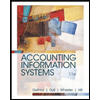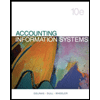CHCECE001 Learner Workbook V2
.docx
keyboard_arrow_up
School
Australian Institute of Business *
*We aren’t endorsed by this school
Course
CHCECE011
Subject
Accounting
Date
Apr 3, 2024
Type
docx
Pages
44
Uploaded by SargentGorillaPerson4117 on coursehero.com
CHCECE001 Learner Workbook V2.0 Page 0
of 44
CHCECE001 Develop cultural competence
Learner Workbook
Table of Contents
Table of Contents
.....................................................................................................................
1
Instructions to students:
..........................................................................................................
3
Assessment instructions
....................................................................................................
3
Assessment Task
...............................................................................................................
3
Assessment requirements
.................................................................................................
3
Competency outcome
........................................................................................................
4
Assessment appeals process
.............................................................................................
5
Special needs
......................................................................................................................
5
Additional evidence
...........................................................................................................
5
Confidentiality
...................................................................................................................
5
Academic misconduct
.......................................................................................................
5
LEARNER ACTIVITY
...........................................................................................................
9
Activity 1A-
........................................................................................................................
9
Activity 1B
........................................................................................................................
10
Activity 1C
...........................................................................................................................
12
Activity 2A
...........................................................................................................................
13
Activity 2B
...........................................................................................................................
14
Activity 2C
...........................................................................................................................
16
Activity 3A
...........................................................................................................................
17
Activity 4A
...........................................................................................................................
18
Activity 4B
...........................................................................................................................
19
Learner activities 1A – 4B checklist – for assessor
..........................................................
21
Activity 5A
...........................................................................................................................
22
Activity 5B
...........................................................................................................................
23
Activity 5C
...........................................................................................................................
24
Activity 5D
...........................................................................................................................
25
Activity 5E
............................................................................................................................
26
Activity 6A
...........................................................................................................................
27
Activity 6B
...........................................................................................................................
29
Activity 6C
...........................................................................................................................
30
Activity 6D
...........................................................................................................................
31
Learner activities 5A – 6D checklist – for assessor
..........................................................
33
Summative Assessments
........................................................................................................
34
Summative Assessments: Section B checklist
..................................................................
36
CHCECE001 Learner Workbook V2.0 Page 1
of 44
Section C: Performance Activity
......................................................................................
37
Summative Assessments: Section C checklist
..................................................................
38
Supplementary Oral Questions (optional) – for assessor
...................................................
39
CHCECE001 Learner Workbook V2.0 Page 2
of 44
Instructions to students:
Assessment instructions
Overview
The purpose of this learner workbook, assessment workbook, simulation diary or logbook is to provide a guide
of instruction and information in relation to the relevant assessment tasks. As a learner, you will be provided
with information relating to your assessment, including how they are to be completed and submitted. Therefore,
it is important that you fully understand the assessment instructions given by your trainer to avoid issues such as
academic misconduct, submitting past the due date and providing incomplete assessments, which you will be
required to resubmit. If you fail to understand or need more clarification on the assessments, you are required to
contact your trainer/assessor for further information. Assessment Task
The aim of assessments is to test your knowledge, skills and understanding in relation to the topics being taught
within a given course. This will be done by using an assessment criterion which shows what you need to do to
achieve the appropriate level of competency. For the purpose of completing a written assessment, you are
required to:
Complete each question, including any sub-questions;
Provide in-depth research on the topic, using appropriate primary and secondary sources;
Respond using a clear structure (e.g. Introduction, points of argument or fact, conclusion), including
references to the sources used.
All assessments required to be completed are compulsory as it is a required condition of your enrolment. Assessment requirements
The assessments within this document can be completed through several approaches such as:
Observation of real, indisputable actions as they occur;
Written or oral task such as reports, role play, work samples etc;
Portfolios;
Questions, or third-party evidence, in which the relevant document (observation document is to be
completed by the agreed third party. All documents relating the third-party observation is to be provided to your trainer/assessor as this will be used
in determining your level of competency. Third-party evidence can be obtained from supervisors (e.g., from the
workplace), or clients/customers. CHCECE001 Learner Workbook V2.0 Page 3
of 44
Please be informed that all assessments are to be typed up. Any handwritten assessments will not be permitted
unless approved by the trainer/assessor. You must also comply with assessment policy and procedures at
https://aibtglobal.edu.au/support/student-forms/policies/
. Simulation diary (if required):
You will do the simulation tasks as a part of your course in the designated
simulated environment.
During the simulation session, the student is required to meet the following requirements:
Follow the dress standards -enclosed shoes, appropriate clothing (no shorts or skirts)
Be aware of relevant procedures in case of accident, emergencies, evacuation
Follow the start and finish times, breaks, work routines, etc.
Follow the policies on personal phone calls and personal emails.
The attendance for simulation sessions will be monitored as per ‘AIBTGlobal’s Monitoring Student
Attendance and Academic Progression policy and procedure.’
Students should follow the standards of behaviour and comply with ‘AIBTGlobal’s Student Conduct
Rules’.
Students should come prepared for the planned activities for simulation.
Observation/demonstration/simulation (if required): You may be required to perform tasks/works/assessments through observations, simulation, or demonstrations.
Your trainer/assessor will provide you with a list of demonstrations, logbooks, simulation diary or any other
related documents for tasks/works/assessments. The observation, simulation or demonstration can occur in the
workplace, or the training environment such as workshop, or simulation labs. During observation,
demonstration or simulation, you will be provided with necessary information (e.g., timeframe) and equipment
and/or materials to complete the task. You are required to perform the work, task or assessment in accordance
with the required instructions. Competency outcome
Upon completing the following assessments, your trainer will either mark the assessment indicating S for
satisfactory or NS for not satisfactory (requires more training). If you, as a learner/trainee, receive satisfactory
marks for all assessments within this module, you will be graded a “C” for ‘Competent’. In vice versa, “NYC”
for ‘Not yet Competent’, in which your trainer will provide adequate feedback and give you a chance to
resubmit. If your second submission of assessments is still NS, you may be required to (i) resubmit assessments
on the third attempt or (ii) redo the course unit again, which requires re-enrolment. Please be aware that the
third attempt of resubmission or re-enrolment to the course can result in additional costs/fees. CHCECE001 Learner Workbook V2.0 Page 4
of 44
Assessment appeals process
As a learner, you have a right to appeal a decision or outcome of an assessment if you feel like it was made
unfairly. However, this complaint must first be resolved with the trainer/assessor before lodging an appeal. If
you are still dissatisfied with the outcome, then a written application of the appeal can be made to the course
coordinator, outlining the grounds for the appeal in accordance with the complaints and appeals policy and
procedures at https://aibtglobal.edu.au/support/student-forms/policies/
. Special needs
Learning adjustments can be made for any candidate who has special needs (e.g., a student with a disability).
However, the trainer/assessor must be well informed about this so they can immediately implement the
necessary adjustments and have it ready before commencement. Additional evidence
If at any event during or after the assessment process, the trainer/assessor requests you to provide additional
information or an alternative submission to establish your level of competency, then you are required to do so.
However, you must do so in a way that avoids any issues of privacy or confidentiality. Confidentiality
All information provided to us regarding your job, workplace and employer will be kept confidential in
accordance with the relevant law. However, it is your responsibility to check that all information provided to us
does not involve details unrelated or not agreed upon for disclosure. For example, information about your
employer, colleagues and other related third parties who might be involved. Although we may require
information about these other parties, it is your responsibility to check that valid consent has been given from
these individuals before providing us with the requested information. This process of obtaining information
from the relevant parties must also be done in accordance with the relevant law. Recognised prior learning
Any candidate may apply for credit transfer which they wish to count towards their course credit following the
application and assessment process of the credit transfer policy and procedure. Academic misconduct
Academic Misconduct includes plagiarism, cheating and/or collusion, or any act or omission by a student which
attempts to circumvent or defeat the integrity of the College’s assessment process. Without limiting the scope of
the definition of academic misconduct, examples of plagiarism, cheating and collusion are provided below:
Plagiarism
is defined as taking someone else’s work or ideas and submitting it as their own. This may include
acts such as, but not limited to:
Copying the direct words of a sentence or paragraph presented in a source, without referencing it or
giving it proper acknowledgement. This also extends to any structure used in completing the
assignment; and
CHCECE001 Learner Workbook V2.0 Page 5
of 44
Your preview ends here
Eager to read complete document? Join bartleby learn and gain access to the full version
- Access to all documents
- Unlimited textbook solutions
- 24/7 expert homework help
Related Questions
question 6tables and question attached in ss's belwo
aoi52
h2i5h
25
thanks for help
l42
64p2o
arrow_forward
D1 Retention: 50%, D7 Retention: %20, D30 Retention: 8%
Interstitial Impressions per DAU: 4, Rewarded Impressions per DAU: 2
Interstitials eCPM: $30, Rewarded eCPM: $50
1) What is day 7 ARPU?
2) How would you estimate d30 ARPU?
arrow_forward
question 40 attached in ss bleow
thanks for help
alwhpwha
parepcaited
prijp2ih2
arrow_forward
dooley company question 46 attached
thanksf or help
hwhpwtolphow
thwtop
hwt
arrow_forward
PR.02.05A business 241 principles of accounting Sam Cengage Answer to module 9
arrow_forward
attacinhed in the screneh sto thankas for help
appreicatei ti
4
p626pi24j6
pi2j4
62ip
62jp64ip
26j4i64p
ji
2ji
4pij4p
hji
b
arrow_forward
Question attached in the screenshot
thankx for the help
lhpl41p4l
4appreicated it
j1iptj13
arrow_forward
Question attached
thanks for the help
4602o4063o
eroge
fo03
303fefe
arrow_forward
Question attached in SS
thanks for the help
l32ply2p3lyp23
pfefefefefpefp
lelele
ep33
arrow_forward
Hcs/380 week 4?
Terminology matching
arrow_forward
V5. Explain 5 reasons that can help you with the theory of descriptive decision-making during your undergraduate studies
arrow_forward
Question attached
appreicated the help
1l3p13lgp13lp13tl1pt140130591490914091
arrow_forward
Q3. Define fallacy and identify and explain eight common fallacies which are committed in everyday life.
arrow_forward
Question attachwed
thanks
fnwroin24oin
1ion13o2
1czc
arrow_forward
Gerald company question attahed in ss below
thanks for hlp
aprpeciatef
jrihjhjt
iohj51
hi5
i5
arrow_forward
SEE MORE QUESTIONS
Recommended textbooks for you

Accounting Information Systems
Finance
ISBN:9781337552127
Author:Ulric J. Gelinas, Richard B. Dull, Patrick Wheeler, Mary Callahan Hill
Publisher:Cengage Learning

Cornerstones of Financial Accounting
Accounting
ISBN:9781337690881
Author:Jay Rich, Jeff Jones
Publisher:Cengage Learning

Pkg Acc Infor Systems MS VISIO CD
Finance
ISBN:9781133935940
Author:Ulric J. Gelinas
Publisher:CENGAGE L
Related Questions
- question 6tables and question attached in ss's belwo aoi52 h2i5h 25 thanks for help l42 64p2oarrow_forwardD1 Retention: 50%, D7 Retention: %20, D30 Retention: 8% Interstitial Impressions per DAU: 4, Rewarded Impressions per DAU: 2 Interstitials eCPM: $30, Rewarded eCPM: $50 1) What is day 7 ARPU? 2) How would you estimate d30 ARPU?arrow_forwardquestion 40 attached in ss bleow thanks for help alwhpwha parepcaited prijp2ih2arrow_forward
- dooley company question 46 attached thanksf or help hwhpwtolphow thwtop hwtarrow_forwardPR.02.05A business 241 principles of accounting Sam Cengage Answer to module 9arrow_forwardattacinhed in the screneh sto thankas for help appreicatei ti 4 p626pi24j6 pi2j4 62ip 62jp64ip 26j4i64p ji 2ji 4pij4p hji barrow_forward
arrow_back_ios
SEE MORE QUESTIONS
arrow_forward_ios
Recommended textbooks for you
 Accounting Information SystemsFinanceISBN:9781337552127Author:Ulric J. Gelinas, Richard B. Dull, Patrick Wheeler, Mary Callahan HillPublisher:Cengage Learning
Accounting Information SystemsFinanceISBN:9781337552127Author:Ulric J. Gelinas, Richard B. Dull, Patrick Wheeler, Mary Callahan HillPublisher:Cengage Learning Cornerstones of Financial AccountingAccountingISBN:9781337690881Author:Jay Rich, Jeff JonesPublisher:Cengage Learning
Cornerstones of Financial AccountingAccountingISBN:9781337690881Author:Jay Rich, Jeff JonesPublisher:Cengage Learning Pkg Acc Infor Systems MS VISIO CDFinanceISBN:9781133935940Author:Ulric J. GelinasPublisher:CENGAGE L
Pkg Acc Infor Systems MS VISIO CDFinanceISBN:9781133935940Author:Ulric J. GelinasPublisher:CENGAGE L

Accounting Information Systems
Finance
ISBN:9781337552127
Author:Ulric J. Gelinas, Richard B. Dull, Patrick Wheeler, Mary Callahan Hill
Publisher:Cengage Learning

Cornerstones of Financial Accounting
Accounting
ISBN:9781337690881
Author:Jay Rich, Jeff Jones
Publisher:Cengage Learning

Pkg Acc Infor Systems MS VISIO CD
Finance
ISBN:9781133935940
Author:Ulric J. Gelinas
Publisher:CENGAGE L